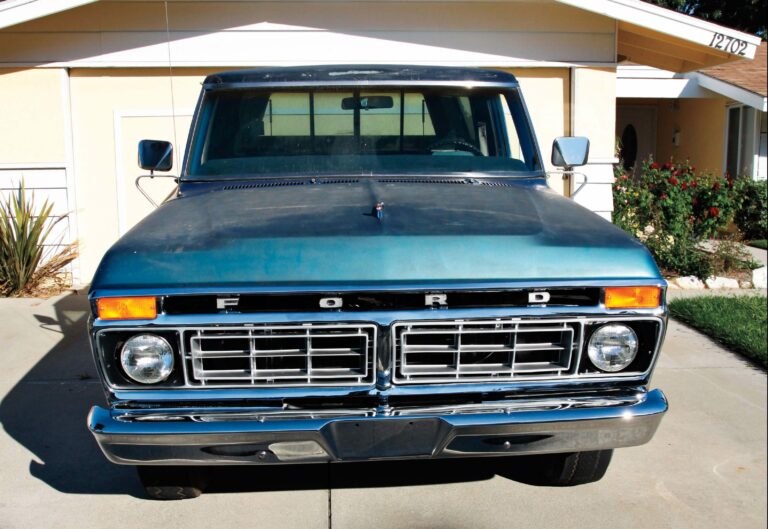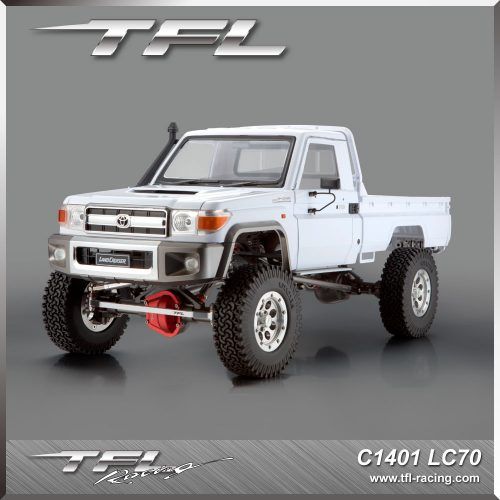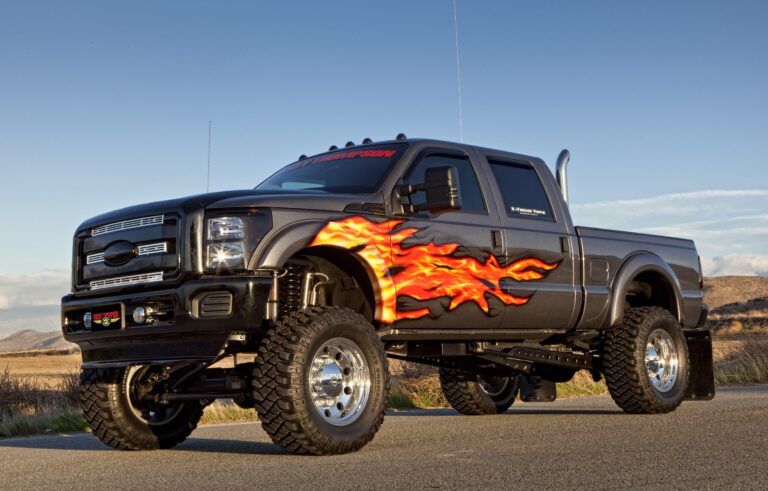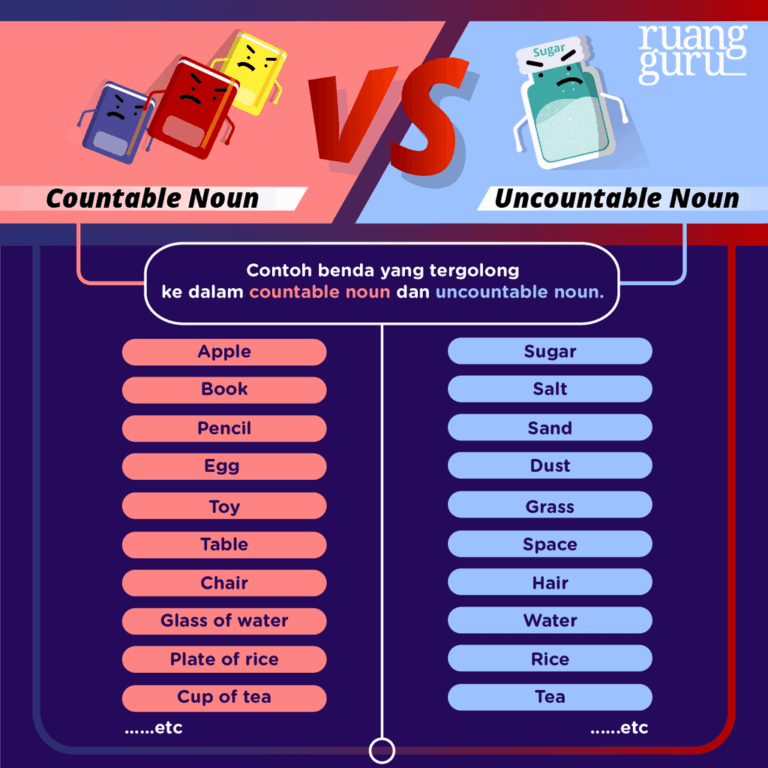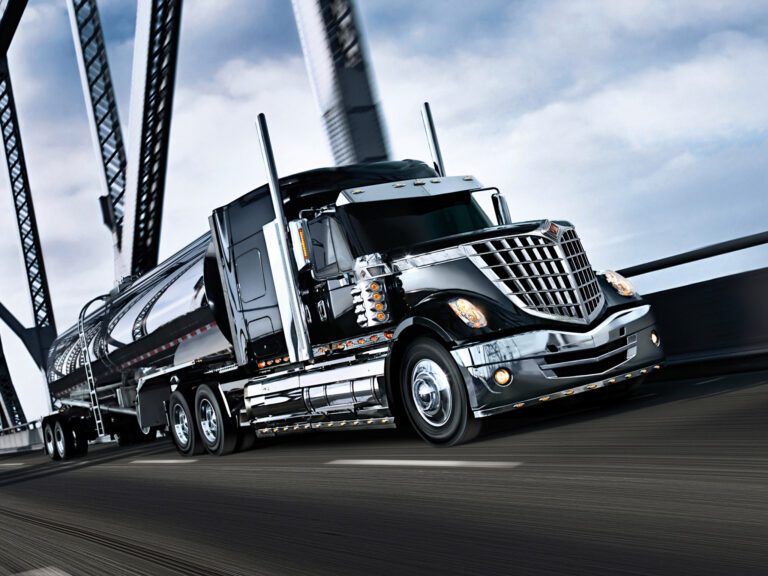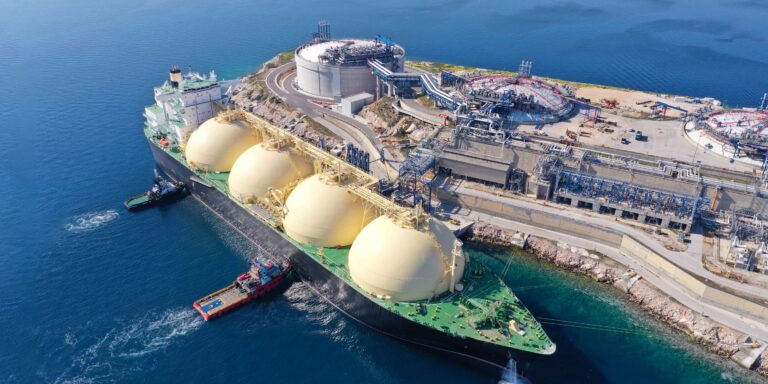Convert Semi Reefer Trailer Into Camper: Your Ultimate Guide to Mobile Living
Convert Semi Reefer Trailer Into Camper: Your Ultimate Guide to Mobile Living cars.truckstrend.com
The open road calls to many, but the traditional RV market often presents a dilemma: limited space, flimsy construction, or exorbitant prices. Enter the semi-reefer trailer, an unlikely hero in the world of DIY mobile living. Converting a semi-reefer trailer into a camper is a growing trend, offering unparalleled space, robust construction, and superior insulation, making it an ideal canvas for those dreaming of a custom, durable, and truly unique home on wheels. This comprehensive guide will delve into every aspect of transforming these refrigerated workhorses into comfortable, adventurous living spaces.
Why Choose a Reefer Trailer for Your Camper Conversion? The Undeniable Advantages
Convert Semi Reefer Trailer Into Camper: Your Ultimate Guide to Mobile Living
At first glance, a commercial reefer trailer might seem like an odd choice for a cozy home. However, their inherent design offers significant benefits that make them superior to many traditional RVs or other trailer types:
- Superior Insulation: This is perhaps the biggest draw. Designed to maintain precise temperatures for perishable goods, reefer trailers boast incredible R-values (thermal resistance). This means your future camper will be remarkably energy-efficient, staying warm in winter and cool in summer with minimal energy consumption, significantly reducing heating and cooling costs.
- Robust Construction: Built to withstand hundreds of thousands of miles and carry tens of thousands of pounds, reefer trailers are incredibly durable. Their aluminum or fiberglass reinforced plywood (FRP) walls, steel frames, and heavy-duty axles mean they are built to last, providing a safe and secure shell for your mobile home.
- Spacious Interior: Ranging from 40 to 53 feet in length and typically 8.5 feet wide, these trailers offer an enormous, open, rectangular footprint. This blank canvas allows for highly customizable layouts, enabling you to design distinct living areas, full-sized kitchens, bathrooms, and even multiple bedrooms, something often impossible in smaller RVs.
- Cost-Effective Base: While the conversion itself requires investment, the initial cost of a used reefer trailer can be significantly lower than a comparable RV shell or even a new cargo trailer of similar size. This provides a substantial head start for your budget.
- Stealth Potential: From the outside, a converted reefer trailer can often maintain its commercial appearance, offering a degree of stealth camping that a brightly colored RV cannot.
- Durability and Weather Resistance: Their commercial-grade construction ensures they can withstand harsh weather conditions, offering a level of protection and longevity unmatched by many recreational vehicles.

Planning Your Reefer Trailer Conversion: The Blueprint for Your Dream Home
Before cutting a single hole or laying down a floor, meticulous planning is paramount. This phase dictates the success and enjoyment of your future mobile abode.
- Legal & Regulatory Considerations: This is non-negotiable. Research your state’s (or country’s) regulations regarding trailer registration, titling a "homemade" RV, weight limits, and any specific safety requirements. Some states may require inspections to re-title a commercial trailer as a recreational vehicle. Understanding these rules upfront can save significant headaches later.
- Budgeting: Create a detailed budget. Beyond the trailer purchase, factor in material costs (framing, insulation, electrical, plumbing, finishes), tools, appliances, professional labor (if outsourcing any work), and a crucial contingency fund (15-20% of your total estimated cost) for unexpected expenses.
- Layout Design: This is where your vision comes to life. Sketch out multiple floor plans, considering the flow of movement, natural light, and the placement of essential zones: kitchen, bathroom, sleeping areas, and living space. Think about weight distribution – heavy items like water tanks and batteries should be centered or balanced over axles. Consider whether you want a "wet bath" (shower and toilet in one space) or a separate bathroom.
- Research & Inspiration: Dive deep into online communities, watch YouTube conversion series, and look at tiny homes and traditional RVs for ideas. Learn from others’ successes and mistakes.

The Conversion Process: A Step-by-Step Guide

The actual conversion is a rewarding, albeit challenging, endeavor. Here’s a general roadmap:
- Acquiring the Trailer: Look for used reefer trailers at commercial vehicle auctions, used truck dealerships, or online marketplaces. Inspect the frame for rust, tires for wear, and the interior walls for major damage or persistent odors. Ensure you receive a clean title.
- Cleaning and Preparation: This is crucial. Thoroughly clean the interior, removing any lingering odors from previous cargo. Industrial cleaners, degreasers, and even ozone generators can be effective. Remove any old refrigeration units, ducting, or unnecessary components, sealing all holes created.
- Opening Creation (Windows, Doors, Vents): This is one of the most nerve-wracking steps. Using specialized tools (like an oscillating multi-tool, jigsaw, or angle grinder), carefully cut openings for windows, the main entrance door, and essential vents (for plumbing, HVAC, or fans). Reinforce all cut edges with steel or aluminum framing to maintain structural integrity and provide a secure mounting surface.
- Framing and Interior Structure: Build out your interior walls and partitions using lightweight materials like wood (e.g., 2x2s or 2x3s) or aluminum studs. Utilize the trailer’s existing insulation, but consider adding extra rigid foam board or spray foam in the floor and ceiling for maximum efficiency. Create subflooring if the existing floor isn’t suitable for your chosen flooring.
- Electrical System: Plan a comprehensive electrical system, including 12V DC for lights and small appliances, and 120V AC for larger appliances and shore power connection. Many conversions incorporate solar panels, a charge controller, a battery bank (lithium-ion recommended), and an inverter for off-grid capabilities. Safety is paramount: use appropriate wire gauges, circuit breakers, and consult an electrician if unsure.
- Plumbing System: Design your fresh water, grey water (for sinks/showers), and black water (for toilets) tank setup. Install a water pump, water heater (propane, electric, or on-demand), and all necessary plumbing lines to your kitchen sink, bathroom sink, and shower. Consider a composting toilet to eliminate the need for a black water tank.
- HVAC and Ventilation: While reefer trailers are well-insulated, they are still large volumes. Install a mini-split AC unit for efficient cooling and heating. Supplement with a propane furnace or wood stove for colder climates. Crucially, install adequate ventilation fans (ceiling fans, exhaust fans in kitchen/bathroom) to prevent condensation and maintain air quality.
- Interior Finishes: Now for the aesthetic touches. Install wall paneling (plywood, shiplap, FRP), flooring (vinyl plank, laminate, or even hardwood), and build or install cabinetry, countertops, and furniture.
- Exterior Work (Optional but Recommended): Paint the exterior for a fresh look and added protection. Consider adding steps, exterior lighting, or even a roof deck for additional living space.
Key Considerations and Potential Challenges
- Weight Distribution: Proper weight distribution is critical for safe towing. Heavy components like water tanks, batteries, and appliances must be strategically placed over or slightly forward of the axles.
- Moisture Control: Despite excellent insulation, condensation can be an issue in any enclosed space. Adequate ventilation is essential to prevent mold and mildew.
- Permitting & Inspection: Navigating the legalities of re-titling and ensuring your conversion meets safety standards can be complex and varies by location.
- Heating & Cooling Power: While insulated, the sheer volume of a reefer trailer means you’ll need robust HVAC systems to maintain comfortable temperatures.
- Finding Skilled Labor: If you’re not fully DIY, finding tradespeople familiar with trailer construction and RV systems can be a challenge.
- Resale Value: While unique, the market for converted semi-trailers is niche. Professional, high-quality builds will command better prices.
Tips for a Successful Reefer Conversion
- Plan Meticulously: The more detailed your plans, the fewer surprises you’ll encounter.
- Invest in Quality: Don’t skimp on critical components like electrical wiring, plumbing, and safety equipment.
- Prioritize Safety: Always follow electrical and plumbing codes. Use proper personal protective equipment.
- Don’t Rush: This is a marathon, not a sprint. Take your time to do things right.
- Join Communities: Online forums and social media groups dedicated to trailer conversions are invaluable resources for advice, troubleshooting, and inspiration.
- Consider Professional Help: For critical systems like high-voltage electrical or complex plumbing, it’s often wise to consult or hire licensed professionals.
Estimated Cost of Convert Semi Reefer Trailer Into Camper
The cost of converting a semi-reefer trailer into a camper varies wildly based on the trailer’s condition, the desired level of luxury, whether you do the work yourself, and your material choices. Below is a table outlining estimated cost ranges:
| Category | Item/Service | Estimated Cost Range (USD) | Notes |
|---|---|---|---|
| I. Base Trailer Acquisition | Used Reefer Trailer (40-53 ft) | $5,000 – $25,000 | Varies significantly by age, condition, mileage, and region. Lower end for older/higher mileage; higher end for newer/better condition. |
| II. Structural & Exterior | Initial Cleaning & Preparation | $200 – $800 | Supplies, pressure washer rental, odor removal. |
| Cutting Openings (Windows, Doors, Vents) | $500 – $2,000 | Tools, reinforcement materials, potential labor. | |
| Windows (RV-style, household) | $150 – $1,000+ per window | Single pane vs. double pane, size, brand, tint. | |
| Entrance Door (RV-style, residential) | $300 – $1,500+ | Security, insulation, design. | |
| Framing Lumber/Metal | $500 – $2,000 | For interior walls, partitions, subfloor, cabinetry frames. | |
| Subfloor/Flooring Materials | $500 – $3,000 | Plywood, insulation, vinyl/laminate/hardwood. | |
| Exterior Paint/Wrap (Optional) | $1,000 – $5,000+ | For aesthetics, rust prevention, and added protection. | |
| III. Systems Installation | Electrical System (Solar, Batteries, Inverter, Wiring, Outlets) | $2,000 – $15,000+ | Depends on off-grid capability, battery bank size, appliance load, quality of components. |
| Plumbing System (Tanks, Pump, Water Heater, Fixtures) | $1,500 – $8,000+ | Fresh, grey, black tanks; on-demand vs. tanked water heater; quality of fixtures. | |
| HVAC (Mini-split AC, Propane Heater, Fans) | $1,000 – $6,000+ | Essential for climate control due to large volume. Efficiency and BTU output. | |
| Insulation (Additional, if needed) | $500 – $2,000 | Spray foam, rigid foam boards for floor/ceiling gaps or reinforcing existing. | |
| IV. Interior Finishes & Appliances | Wall Paneling/Drywall | $1,000 – $5,000 | Plywood, shiplap, drywall, paint, wallpaper. |
| Kitchen Appliances (Fridge, Stove, Sink) | $1,000 – $5,000+ | RV-specific vs. residential; propane vs. electric; size and features. | |
| Bathroom Fixtures (Toilet, Shower, Sink) | $500 – $3,000+ | Composting toilet, wet bath, traditional RV toilet, shower enclosure. | |
| Cabinetry & Countertops | $1,000 – $8,000+ | DIY vs. pre-made vs. custom built, material choice (plywood, laminate, solid surface). | |
| Furniture (Bed, Couch, Dining Area) | $500 – $5,000+ | New vs. used, custom built, convertible options. | |
| V. Miscellaneous & Contingency | Tools & Consumables | $500 – $3,000 | Saws, drills, sealants, fasteners, safety gear, blades, sandpaper. |
| Permits & Inspections (if required) | $100 – $1,000 | Varies by state/county. | |
| Contingency Fund (15-20% of total) | Variable | Essential for unexpected issues, material shortages, professional assistance. | |
| TOTAL ESTIMATED COST RANGE | Basic (DIY, Used Materials) | $10,000 – $30,000 | Minimalist, primarily DIY, basic systems, focus on functionality. |
| Mid-Range (Mix DIY/Pro, New Materials) | $30,000 – $70,000 | Comfortable, functional, some professional installations, quality materials. | |
| Luxury (Professional Build, High-End) | $70,000 – $150,000+ | Fully custom, high-end appliances, sophisticated systems, professional labor. |
Frequently Asked Questions (FAQ) about Reefer Trailer to Camper Conversion
Q: Is it legal to convert a reefer trailer into a camper?
A: Yes, generally. The legality hinges on properly re-registering and titling the trailer as a recreational vehicle (RV) or "homemade trailer." Regulations vary significantly by state or country, so always check local Department of Motor Vehicles (DMV) requirements.
Q: How much does a reefer trailer conversion cost?
A: Costs vary widely, from as little as $10,000 for a basic, DIY build using salvaged materials to over $150,000 for a professionally built, high-end luxury conversion. The average DIY conversion typically falls in the $30,000 – $70,000 range.
Q: Are reefer trailers well-insulated for living?
A: Absolutely! Their primary purpose is temperature control, so they come with excellent built-in insulation, often superior to many traditional RVs. This makes them highly energy-efficient for heating and cooling.
Q: What are the biggest challenges in converting a reefer trailer?
A: Key challenges include cutting precise openings for windows and doors while maintaining structural integrity, managing weight distribution for safe towing, ensuring proper ventilation to prevent condensation and mold, and navigating the legal and registration processes.
Q: Can I live off-grid in a reefer camper?
A: Yes, they are excellent for off-grid living due to their space and insulation. With a robust solar power system, large water tanks, and a composting or cassette toilet, you can achieve significant independence from traditional hookups.
Q: How long does a conversion typically take?
A: The timeline varies greatly depending on your skill level, available time, and the complexity of the build. A basic conversion might take 3-6 months, while a comprehensive, full-time living conversion can easily take 1-2 years, especially if done part-time.
Q: What about the smell from previous cargo?
A: This is a common concern. Thorough cleaning with industrial degreasers, odor eliminators, and even ozone treatments can effectively remove most lingering smells. Sealing the interior surfaces before finishing also helps.
Conclusion
The conversion of a semi-reefer trailer into a camper is an ambitious yet incredibly rewarding project. It offers the unique opportunity to create a truly bespoke mobile living space that combines the durability and spaciousness of a commercial trailer with the comfort and amenities of a modern home. While it demands careful planning, significant effort, and a willingness to learn, the result is a robust, energy-efficient, and highly customizable vehicle that stands out from the crowd. For those seeking the freedom of the open road without compromising on space or comfort, transforming a reefer trailer is not just a conversion; it’s the creation of a personalized adventure hub, ready to take you wherever your wanderlust leads.

